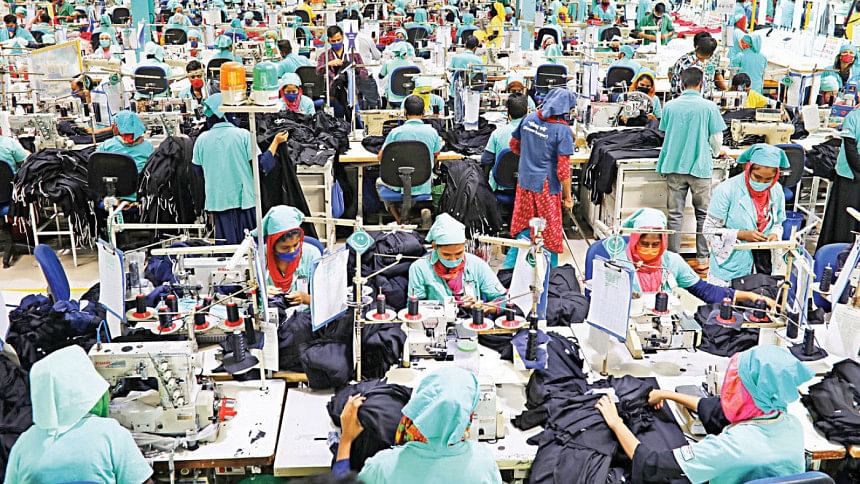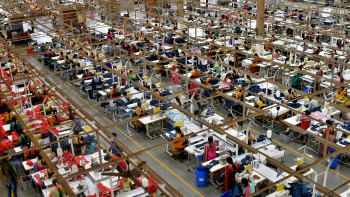Fashion needs to support suppliers for green transition

How much does it cost to operate a sustainable, low emissions garment factory, one that has a reduced environmental impact and meets the increasingly stringent environmental, social and governance (ESG) requirements of global apparel brands and retailers?
While factories clearly differ in terms of size, location and the type of production taking place, my own experience is that it is not uncommon for factory upgrades to cost millions if not tens of millions of dollars.
In fact, across Bangladesh, factories have collectively spent hundreds of millions of dollars on industrial upgrading, retrofitting and developing new, green factories in recent years. All of this is to meet the requirements of the global fashion industry to achieve carbon-emissions reduction targets.
Ours has been a quiet revolution. When a garment supplier invests millions of dollars in new effluent-treatment technology, in smart energy-saving technology and solar power, there is no song and dance. There is no public relations noise. And there is no credit. As factory owners, we accept our place in supply chains. We also understand that it is our customers in the fashion industry who tell the "green supply chain" story to end consumers.
A question I have been pondering about more and more, however, is this: should the fashion industry support suppliers in the green transition? Should they support the industrial upgrading required to meet future emissions targets? Are brands and suppliers partners in this process or is the green transition a journey suppliers must take on their own? In looking at this issue, I'd like to relate my own experiences (which I know are echoed elsewhere) to highlight the problems we face as we look to reduce emissions in global fashion supply chains.
A couple of years ago, it became apparent that I needed to make an investment in my factory to reduce its environmental burden. This was going to cost a seven-figure sum. This was during the pandemic, and for cashflow reasons, I did not have the money in hand. So, I approached a major global fashion brand for support. They said no. I then asked the business if they would pay for the required upgrade and deduct the costs from monies owed on future orders. This idea was also rejected.
Eventually, in 2023, I managed to fund the project out of my own pocket.
This is my experience. Based on this and from talking to other suppliers, it has become apparent that fashion brands have no interest in financially supporting supply chains to be more sustainable. This is not a critique of the brands. It is simply a statement of fact. However, I believe it represents a major problem when it comes to meeting climate targets and achieving net zero.
It is no great secret that garment supply chains have been reeling ever since the pandemic. A lack of orders is placing continued downward pressure on prices in an industry where manufacturers are already operating on tight margins. Ours is not like some other industries where supply chains hold considerable power and are able to drive a hard bargain on prices with customers. Apparel makers are mainly price-takers. And fashion brands will, for the most part, squeeze suppliers on prices. As suppliers we accept this. In the case of larger garment makers, it is possible to absorb downward pressure on prices via economies of scale and improving efficiencies.
The challenge, however, comes when manufacturers are faced with making huge, ongoing investments to operate more sustainably and hit climate targets. Many factory owners simply do not have the upfront capital to make these investments. This means that such investments will be delayed or simply will not happen at all.
Is this really what the fashion industry wants? What about the urgency of the climate crisis?
It is my firm belief that sustainability teams in the fashion industry are earnest and genuine about their desire to reduce their environmental impacts. But do they truly understand the financial constraints faced by suppliers that could be thwarting progress on these issues? If brands and their suppliers were to work collaboratively on this issue, and if the former were to support the latter around financing, we could address these issues so much more quickly.
Unlike some, I don't begrudge the record profits made by world-class fashion brands or the fact they have grown cash rich on the back of their Asian supply chains. This is capitalism, and I accept its warts and all.
What I would like to see, however, is some of this money being distributed along supply chains in the form of loans, grants and other financial instruments. If it's left to suppliers, the green transition will take decades. I fear many targets will be missed along the way.
Fashion brands, with their financial might and global reach, hold the keys to change on sustainability issues. But they must start backing green rhetoric with money and support suppliers to make the changes required for a more sustainable industry.
Mostafiz Uddin is the managing director of Denim Expert Limited. He is also the founder and CEO of Bangladesh Denim Expo and Bangladesh Apparel Exchange (BAE).
Views expressed in this article are the author's own.
Follow The Daily Star Opinion on Facebook for the latest opinions, commentaries and analyses by experts and professionals. To contribute your article or letter to The Daily Star Opinion, see our guidelines for submission.

 For all latest news, follow The Daily Star's Google News channel.
For all latest news, follow The Daily Star's Google News channel. 









Comments